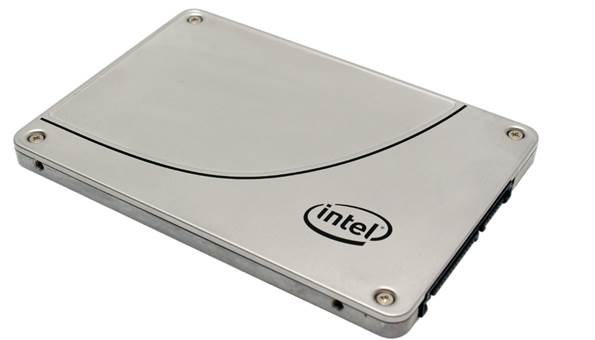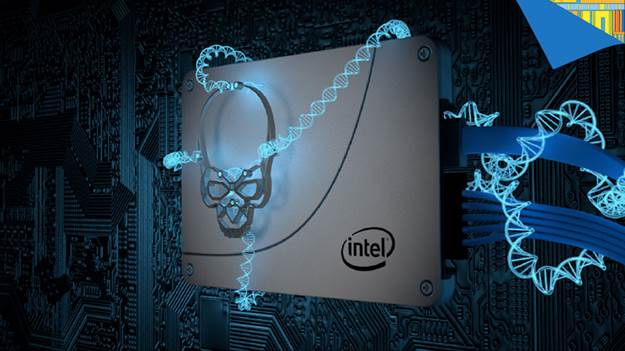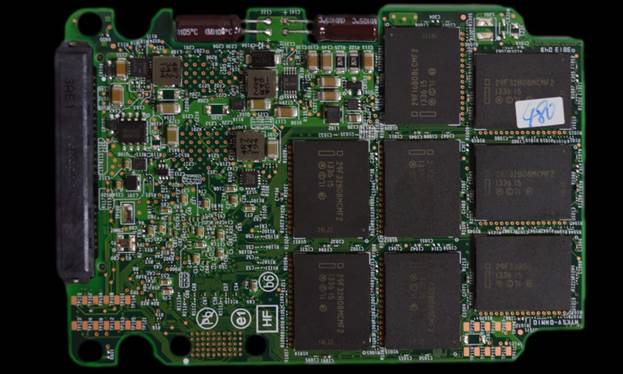The champ is back. In the beginning, the
landscape of consumer SSDs was wild, weird, and wondrous. The first solid-state
drives used SLC NAND and made a mockery of hard drives’ performance. They also
cost a mortgage payment or two. Even for power users, these early SSDs were the
definition of a vanity buy, the teacup giraffe of PC components.

The
days of Intel being the dominant player in the client SSD business are long
gone. A few years ago Intel shifted its focus from the client SSDs to the more
profitable and hence alluring enterprise market
Intel was one of the first manufacturers to
bring balance to the Force, as it were. The X18-M and X25-M featured vastly
more affordable MLC NAND and Intel’s homebrewed storage controller; these SSDs
still outmatched hard drives in terms of performance, but it didn’t take a
king’s ransom to retain their services.
Enthusiasts came out in droves to buy these
SSDs. Intel used its own storage controllers for a few years before switching
to third-party silicon. Well, now a few more years have passed, and if you’re
still carrying a torch for an SSD controller that’s Intel born and bred, you’re
in luck: The new SSD 730 drives are all Intel, through and through.

While
the branding suggests that this is an enterprise drive like the SSD 710, Intel
is marketing the SSD 730 directly to consumers and the DC S3xxx along with the
900 series remain as Intel's enterprise lineups
The SSD 730 series, formerly code- named
“Jackson Ridge,” relies on Intel’s third-generation controller and 20nm NAND
flash, but with a clever little twist. The SSD 730’s controller and NAND are
both overclocked—from 400MHz to 600MHz in the case of the controller and from
83MHz to 100MHz for the NAND. Despite tinkering with the SSD’s clocks, Intel
throws an impressive five- year warranty behind the SSD 730 Series. The drives’
write endurance, to 70GB of writes per day, jumps out as a spec for a drive
that belongs in a server rack, not a power user’s gaming rig.
The 480GB SSD 730 that Intel sent us
promises sequential reads and writes of 550MBps and 470MBps, respectively.
Random reads and writes are mighty fine, too, pushing the needle up to 89,000
IOPS (read) and 74,000 IOPS (write). Better still, performance scales
incredibly well when you stripe a pair of SSD 730s together, according to
Intel.

Adopting
the platform from the DC S3500/S3700, the SSD 730 is Intel's first fully
in-house designed client drive since the SSD 320
These claims, as it turned out, ain’t too
far from the truth. Our benchmark results loudly declared what we suspected all
along: Intel still knows how to make a damn good SSD. Welcome back, guys. We’ve
missed you.
|
Specifications:
·
Sequential read/write (advertised): 550MBps/470MBps;
·
Max 4K random read/write (advertised): 89,000
IOPS/74,000 IOPS;
·
Interface: 6Gbps SATA; Warranty: 5 years
Test system specs:
·
Intel: Core i7-4770K;
·
Motherboard: GIGABYTE GA-Z87X-UD7 TH;
·
GPU: ASUS ROG POSEIDON-GTX780-P-3GD5;
·
RAM: 8GB ADATA XPG V2 DDR3-2400;
·
OS: Windows 8 Enterprise (64-bit)
|